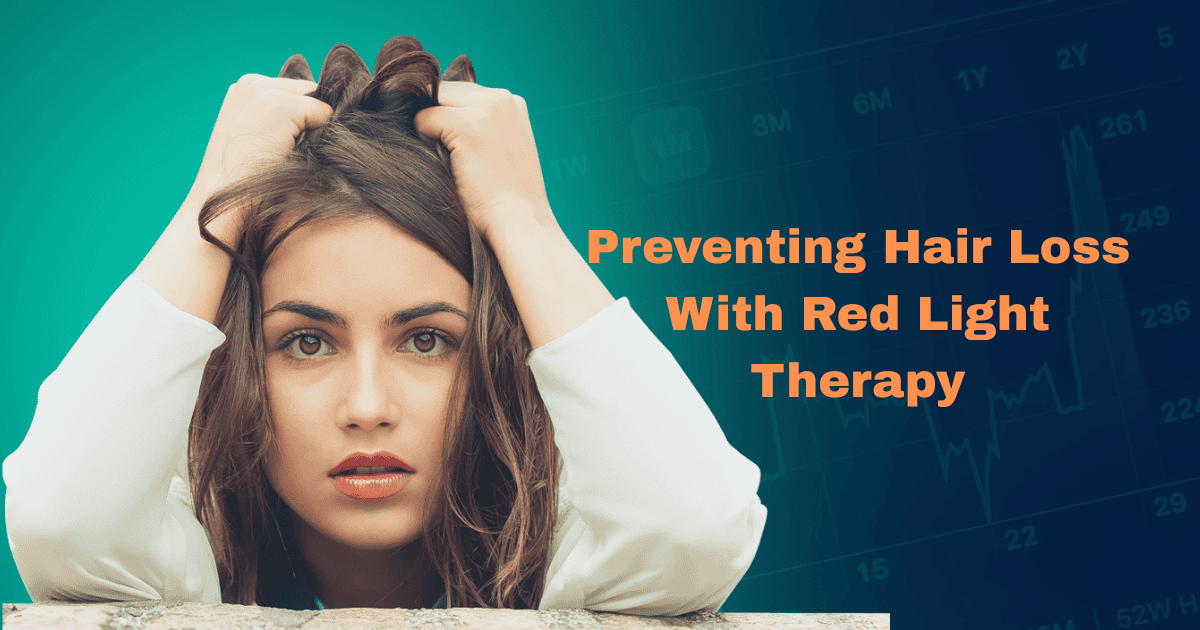Hereditary hair loss, such as androgenetic alopecia, is a common concern for individuals with a family history of thinning hair. While genetic predisposition cannot be changed, early intervention can slow the progression of hair loss and preserve hair density.
Red light therapy (RLT), also known as low-level laser therapy (LLLT), is a non-invasive treatment that stimulates hair follicles, improves scalp health, and delays follicle miniaturization.
By starting RLT early, individuals can take proactive steps to manage genetic hair loss effectively.
Key Takeaways
- Red light therapy (RLT) stimulates cellular activity in hair follicles, delaying thinning and promoting regrowth.
- Early use of RLT can prolong the growth phase of the hair cycle and reduce inflammation linked to hereditary hair loss.
- Combining RLT with other treatments like DHT blockers or nutritional support enhances results.
- FDA-cleared devices with wavelengths between 620 and 850 nm are ideal for preventative care.
Understanding Hereditary Hair Loss
What Causes Hereditary Hair Loss?
Hereditary hair loss, most commonly androgenetic alopecia, is influenced by genetic sensitivity to androgens like dihydrotestosterone (DHT). Key factors include:
- Follicle Miniaturization: Hair follicles shrink over time, producing thinner strands until they stop growing.
- Shortened Growth Phase: The anagen (growth) phase of the hair cycle becomes shorter, reducing overall density.
- Inflammation: Chronic scalp inflammation accelerates follicular damage.
Signs of Early Hair Loss
Individuals with a family history of hair loss should monitor for:
- Thinning at the Crown: A common early sign in men.
- Diffuse Shedding: Often seen in women with female pattern hair loss.
- Receding Hairline: A hallmark of male pattern baldness.
How Red Light Therapy Works for Prevention
Red light therapy uses wavelengths between 620–850 nm to penetrate the scalp and stimulate cellular processes. Here’s how it helps prevent hereditary hair loss:
1. Reactivates Dormant Follicles
RLT stimulates mitochondria in follicular cells, increasing ATP production—the energy source for cellular functions. This reactivates dormant follicles and encourages new growth.
2. Prolongs the Growth Phase
RLT delays the transition from anagen (growth) to catagen (rest), helping maintain thicker hair over time.
3. Enhances Blood Circulation
RLT improves microcirculation in the scalp, delivering oxygen and nutrients to follicles. This supports healthy follicle function and prevents miniaturization.
4. Reduces Scalp Inflammation
Inflammation caused by DHT sensitivity can damage follicles. RLT’s anti-inflammatory properties create a healthier environment for hair growth.
Benefits of Starting Red Light Therapy Early
Prevents Premature Thinning:
- Stimulates dormant follicles before they become inactive.
- Delays miniaturization caused by genetic predispositions.
Improves Scalp Health:
- Enhances circulation to deliver nutrients critical for follicle function.
- Reduces inflammation linked to hereditary conditions.
Supports Long-Term Hair Density:
- Maintains thicker strands by prolonging the growth phase.
- Encourages consistent regrowth over time.
Comparing Preventative Treatments: RLT vs Alternatives
| Treatment Method | Benefits | Limitations |
|---|---|---|
| DHT Blockers | Targets hormonal sensitivity | Requires daily use; potential side effects |
| Nutritional Supplements | Improves overall scalp health | Results may take months |
| Minoxidil | Stimulates follicle activity | Temporary effects; requires ongoing application |
| Red Light Therapy (RLT) | Non-invasive; prolongs growth phase; reduces inflammation | Requires consistent use over weeks |
How to Use Red Light Therapy for Prevention
Step 1: Choose an FDA-Cleared Device
Look for devices designed specifically for scalp treatment:
- Wavelengths between 620–850 nm are ideal for stimulating follicular activity.
- Options like helmets or handheld devices ensure even coverage.
Step 2: Establish a Routine
Consistency is key:
- Use RLT for 15–20 minutes per session, 3–5 times per week.
- Avoid overuse to prevent irritation.
Step 3: Combine with Complementary Treatments
Maximize results by pairing RLT with:
- DHT Blockers: Medications like finasteride or natural alternatives like saw palmetto.
- Nutritional Support: Biotin, zinc, and vitamin D supplements enhance follicle health.
Recommended Devices for Preventative Hair Care
| Device Name | Features | Price Range |
|---|---|---|
| REVIAN RED | Dual-wavelength technology (620 & 660 nm) | $499 |
| iRestore Essential | Helmet design; full scalp coverage | $200–$400 |
| CapillusUltra | Compact design; portable laser cap | $799 |
These devices are effective when used consistently over several months.
Practical Tips for Effective Use
Here are some tips to maximize results:
- Start Early: Begin RLT as soon as signs of thinning appear or if you have a strong family history of hair loss.
- Monitor Progress: Track changes in density and shedding every month.
- Protect Your Eyes: Wear protective goggles during sessions to avoid eye strain.
Conclusion
Red light therapy (RLT) offers a promising approach for those genetically predisposed to hair loss. The research clearly demonstrates that this non-invasive treatment can significantly impact hair growth by stimulating follicular activity, improving blood circulation, and reducing inflammation that contributes to hair thinning.
When implemented early as a preventative measure, RLT can effectively delay the progression of hereditary hair loss and maintain healthier hair density over time.
Clinical evidence supports RLT’s effectiveness, with studies showing increased hair density and thickness after consistent treatment. For those with a family history of androgenetic alopecia, starting treatment before significant thinning occurs can preserve follicle function and extend the anagen (growth) phase of the hair cycle.
The versatility of RLT makes it particularly valuable as part of a comprehensive approach to hair preservation. Whether used alone or combined with other treatments like minoxidil or DHT blockers, red light therapy provides a foundation for maintaining scalp health and follicular activity.
By taking this proactive step, individuals with genetic predispositions to hair loss can take control of their hair health journey with a scientifically-backed, non-invasive solution that addresses the underlying cellular mechanisms of hair growth.
Related: Red Light Therapy for Male Pattern Baldness: Protocols, Timelines, and Expected Results

Leave a Reply